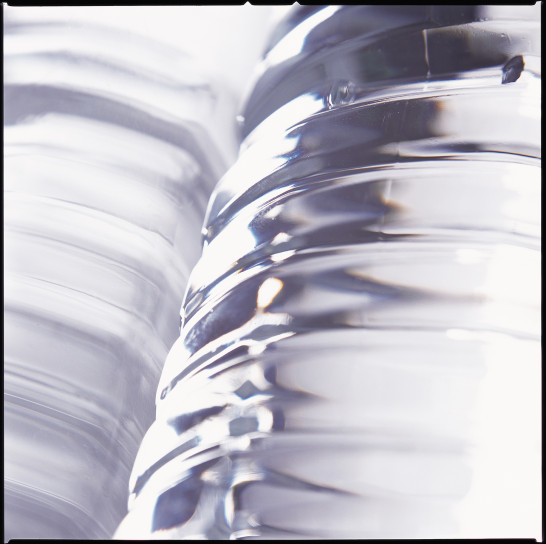Liquid Assets
Eat Issue 1: Temptation

This article was originally published in October 2000.
Water, the basis of all life on Earth, is now one of the planet’s most fashionable drinks. Worldwide, companies are packaging good old H2O and selling it back to us. But are we getting less than we bargained for?
Although Hollywood is no longer the trendsetter it once was, it can, by parading everyday products and fads, still bestow a star-studded seal of approval. Thus, when the irreconcilable differences between Demi and Bruce are said not to include Trinity, which they continue to sup in their separation, when Jack Nicholson is spotted sneaking a litre of Evian into the ‘beverages strictly forbidden’ Academy Awards, and when Raquel Welch claims not only to drink Evian, but also to wash her hair in the stuff, we are witnessing the completion of the circle: the bottled aqua-fication of Western society. Sales of bottled water have soared in the past decade, and annual growth is now estimated at 10 per cent. The French and Italians lead the way, with each citizen knocking back over 100 litres per year. In Germany, breweries are feeling the effects of the trend as bottled water looks to eclipse beer as the national drink.
Even the notoriously europhobic Brits have taken to the waters with an enthusiasm that suggests they are more continental than they let on.
Japan’s yearly consumption has yet to top five litres per person, but this is set to snowball as more overseas brands learn to navigate the country’s opening markets. Here, the latest bottled water fad is for ‘deep sea water’, fresh water from melted icebergs that has lain undisturbed at the bottom of the ocean for two millennia. Companies claim that its age helps it blend with the natural components of the human body, an interesting way of flogging something that has been sitting at the back of nature’s fridge for 2,000 years. Yet what Japan does today affects up to half a billion middle-class Asians tomorrow, making bottled water a flood waiting to happen.
Of the 700 brands of bottled water available in the US, around 80 per cent use processed water.
But while sales soar, knowledge of what we’re actually drinking is harder to come by. This has led some critics to denounce the whole business as one of the most profitable schemes ever to deprive the gullible of their money.
Detractors claim that ill-defined categories – such as artesian, mineral, distilled, purified and natural spring – are allowing bottlers to charge up to 1,500 times the price of tap water for what is basically, well, tap water. Of the 700 or so brands of bottled water available in the US, around 80 per cent use processed water. As ‘municipal treatment plant’ lacks a certain marketing finesse, bottles arrive on the shelves seductively labelled to suggest anything but. Pristine Alpine settings and names to match are ubiquitous: Both Pepsi’s Aquafina, whose label alludes to mountains and snow, and Coca-Cola’s Dasani use processed municipal water.

Further clouding the issue is mineral water – a term commonly misappropriated to include all bottled waters. Natural mineral water comes from underground sources that contain naturally dissolved, highly beneficial minerals and trace elements. The human body more easily and better absorbs minerals in drinking water – calcium, iron, zinc, copper, etc – than in food. However, water containing a constant and optimum proportion of these impurities is so rare that mineral water has become widely known as ‘white petrol’ (a term the Gulf states use with relish to decry the low barrel price of the real thing). Lax laws that differ wildly from country to country allow mineral water onto the market that, because of an unstable source, can have either way too high – and therefore harmful – a mineral content, or contain foreign elements that are in themselves harmful. This is especially true of Europe, as evinced in 1990 when Perrier was forced to recall 160 million bottles of mineral water after traces of benzene were found in samples. The company has never fully recovered.
Of course, bottled water manufacturers are not trying to poison their patrons, and companies go to great lengths to ensure that what they are selling is safe. But in an age when a substance so seemingly benign can fuel a multi-million-dollar industry, blind consumer faith seems as naive as Evian spelled backwards. Ironically, it may once again be Hollywood’s example that we ultimately decide to follow: screen legend WC Fields was once asked why he never drank water. “Fish fuck in it,” he replied.
Text: Victor France / Photo: Tsukasa Furusato

